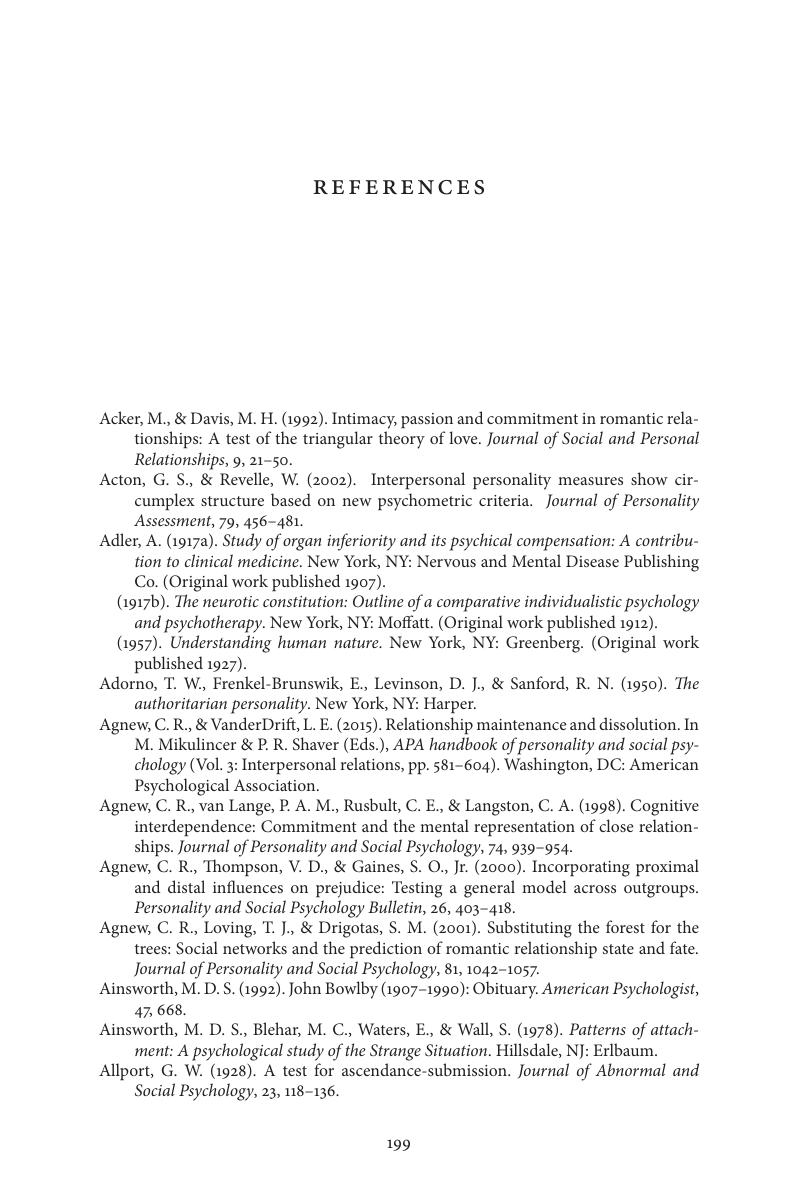Book contents
- Personality and Close Relationship Processes
- Advances in Personal Relationships
- Personality and Close Relationship Processes
- Copyright page
- Dedication
- Contents
- Book part
- Introduction
- Part I Overview
- Part II Self and Personality Constructs as Reflected in Close Relationship Processes
- Part III Conclusion
- References
- Index
- References
References
Published online by Cambridge University Press: 05 August 2016
- Personality and Close Relationship Processes
- Advances in Personal Relationships
- Personality and Close Relationship Processes
- Copyright page
- Dedication
- Contents
- Book part
- Introduction
- Part I Overview
- Part II Self and Personality Constructs as Reflected in Close Relationship Processes
- Part III Conclusion
- References
- Index
- References
Summary

- Type
- Chapter
- Information
- Personality and Close Relationship Processes , pp. 199 - 232Publisher: Cambridge University PressPrint publication year: 2016



